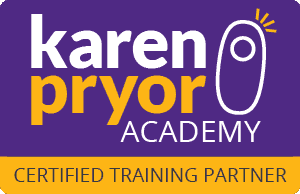Handler Mechanics - Loose Leash Walking
Loose Leash Walking Game: Mastering Handler Mechanics
Why This Game Works:
This game is designed to improve loose leash walking (LLW) by focusing on handler mechanics rather than controlling the dog. By following a structured pattern of movement and reinforcement, dogs naturally develop engagement and focus without pressure.Key Benefits:
Builds handler awareness and consistency.
Uses high-frequency reinforcement to shape behavior quickly.
Encourages dogs to stay engaged without direct cues or corrections.
Creates a predictable pattern that helps dogs succeed in LLW.
How to Play
Setup:
Place 10 visual markers (cones, small mats, or any visible ground markers) in a straight line.
Have your dog on a leash and ready to begin at the first marker.
Game Instructions:
Walk to the first visual marker.
Stop, mark (click or verbal marker), and deliver a treat directly to your dog’s mouth—no matter what they are doing.
Move to the next visual marker and repeat the process.
Continue down the entire line, stopping and rewarding at each visual.
At the end of the line, turn around and repeat the process back, but randomly remove two visual markers each round.
Continue until only the two end visual markers remain. This is where you truly see the magic of this game, as the dog naturally maintains engagement and focus over a longer distance.
Why This Works
High-Frequency Rewards Shape Behavior Quickly: The repeated pattern of stopping, marking, and rewarding builds engagement and reinforces LLW without micromanaging the dog.
Handler Mechanics Take Priority: Since handlers do not cue or correct the dog, they focus on their movement, timing, and reward placement—allowing the dog to learn naturally.
Dogs Learn Through Patterns, Not Pressure: As the game progresses, dogs begin offering engagement on their own because they recognize the rhythm and predictability of the exercise.
Reduces Handler Overcorrection: This method prevents handlers from unintentionally nagging, luring, or over-cueing, which can cause confusion.
Key Takeaways for Training:
Your dog learns faster when you are consistent. Focus on what you are doing rather than micromanaging your dog.
Training is always happening. Every walk reinforces habits—good or bad. Be intentional with your handling.
Engagement should be natural, not forced. This game builds a foundation for loose leash walking by rewarding focus in a structured but pressure-free way.
By focusing on handler mechanics and structured reinforcement, this game helps set both dog and handler up for LLW success! This game was made popular by Karen Pryor training shelter dog's how to LLW in 15 minutes on stage in front of an audience. This explanation was adapted by GFDT.




Comments
Post a Comment